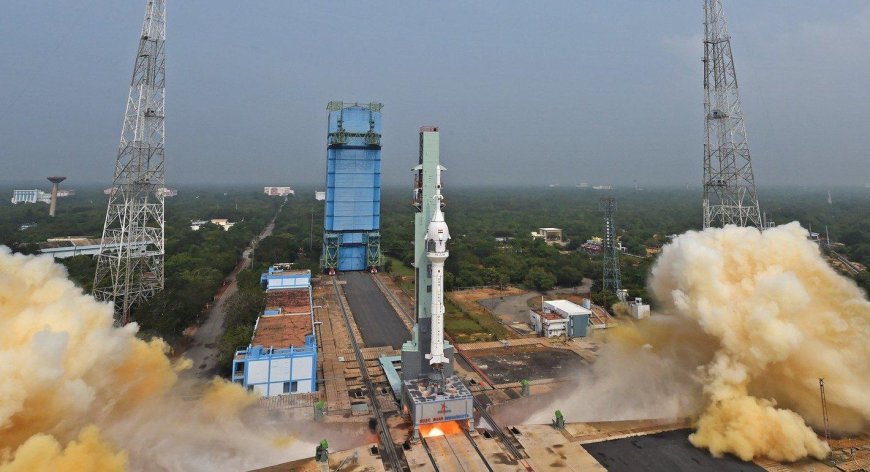India’s Next Giant Leap: ISRO’s Venus Orbiter Mission Gets Green Light from Union Cabinet
The Union Cabinet has approved ISRO's long-awaited Venus Orbiter Mission. Discover its scientific goals, launch timeline, payload details, and what this means for India’s deep space exploration efforts.

India is officially setting its sights on Venus. On September 18, 2024, the Union Cabinet cleared the proposal for the Venus Orbiter Mission—an ambitious interplanetary endeavor by the Indian Space Research Organisation (ISRO). Slated for a 2026 launch window, this mission will place India in an elite group of nations studying Earth’s mysterious twin.
Dubbed informally as “Shukrayaan-1”, the mission aims to deepen our understanding of Venus’s atmosphere, geology, and potential volcanic activity, areas that remain shrouded in mystery due to the planet’s thick cloud cover and harsh surface conditions.
The Scientific Significance: Why Venus?
Often referred to as Earth’s twin, Venus is similar in size and composition but vastly different in environmental conditions. With surface temperatures over 450°C, clouds of sulfuric acid, and an atmospheric pressure 92 times that of Earth, Venus presents a complex and extreme planetary system.
Studying Venus can help scientists:
-
Understand why Earth and Venus evolved so differently.
-
Explore greenhouse gas effects at a planetary scale.
-
Investigate the possibility of ancient oceans or microbial life.
-
Refine models for climate change and exoplanet habitability.
India’s Venus mission also complements the global resurgence in interest. NASA’s VERITAS and DAVINCI+, and ESA’s EnVision missions are all targeting launches in the late 2020s, making this decade a renaissance for Venus science.
Mission Overview: Shukrayaan-1 in Detail
According to ISRO's official report, the Venus Orbiter Mission will carry a scientific payload of approximately 100 kg, with multiple advanced instruments aimed at high-precision atmospheric, ionospheric, and surface measurements.
Key Instruments Likely to be Onboard:
-
Synthetic Aperture Radar (SAR): To map Venus’s surface through its thick atmosphere.
-
Venusian Atmospheric Spectroscopy: For analyzing composition and dynamics of the atmosphere.
-
Plasma Analyzer and Magnetometer: To study solar wind interaction and magnetic fields.
-
Thermal Imaging Camera: For detecting surface temperatures and volcanic hotspots.
The mission will likely operate in a highly elliptical orbit, with an apogee of over 60,000 km and a perigee of a few hundred kilometers, enabling a 360-degree view of Venus’s complex system.
Launch Timeline and Vehicle
ISRO is targeting a launch window between December 2026 and mid-2027, depending on planetary alignment and mission readiness. The GSLV Mk II is the expected launch vehicle, given its capability for deep space injections.
Once launched, the spacecraft is expected to take 7 to 9 months to reach Venus, followed by a capture maneuver and orbital insertion. The mission duration is set at four years, although—as with previous missions like Mangalyaan—ISRO may extend it based on spacecraft health.
Cabinet Approval: What It Means
The Cabinet’s approval is a major milestone. It clears the way for:
-
Final budget allocation (estimated at ₹550–₹600 crore).
-
Procurement of mission-critical components.
-
International collaborations, including potential payload contributions from French (CNES), German (DLR), and Russian space agencies.
-
Enhanced focus on deep space capability development, positioning India as a serious player in planetary science.
According to The Hindu’s coverage, the mission will significantly advance India’s planetary research, contributing to global databases and models.
ISRO's Deep Space Journey: A Contextual Timeline
India’s planetary missions reflect its steady progression in interplanetary science:
| Year | Mission | Target | Outcome |
|---|---|---|---|
| 2008 | Chandrayaan-1 | Moon | Confirmed water on Moon |
| 2013 | Mars Orbiter (MoM) | Mars | Cost-effective, successful orbit |
| 2019 | Chandrayaan-2 | Moon | Orbiter successful |
| 2023 | Chandrayaan-3 | Moon | First soft-landing near south pole |
| 2026 | Shukrayaan-1 | Venus | (Upcoming) |
Strategic and Scientific Implications
-
Boost to Indigenous Technology
The mission will push advancements in deep space navigation, radiation shielding, thermal regulation, and onboard AI-based decision-making. -
International Standing
It aligns with India’s ambitions of becoming a space superpower, adding to its growing influence in multilateral bodies like the Artemis Accords. -
Public Engagement & STEM Inspiration
Like Mangalyaan, Venus exploration will likely stir excitement in India’s youth, boosting interest in space science, astrophysics, and engineering careers.
Expert Commentary
Dr. Tapan Misra, former Director of SAC-ISRO, notes:
“Venus is a geophysical goldmine. Studying it through Shukrayaan-1 will answer fundamental questions about Earth’s past and Mars’ future.”
Meanwhile, Nature India highlights India’s cost-effective mission architecture as a key differentiator in executing ambitious planetary missions within tight budgets.
Final Thoughts
With the Cabinet’s nod, ISRO’s Venus Orbiter Mission moves from concept to countdown. It’s more than a technological feat—it’s a scientific necessity and a diplomatic asset. As the world reawakens its curiosity about Venus, India is ready to step onto this interplanetary stage not just as a participant, but as a leader.
As we await further updates from ISRO, the mission marks yet another bold step in India’s growing space legacy, aligning national ambition with global scientific inquiry.











